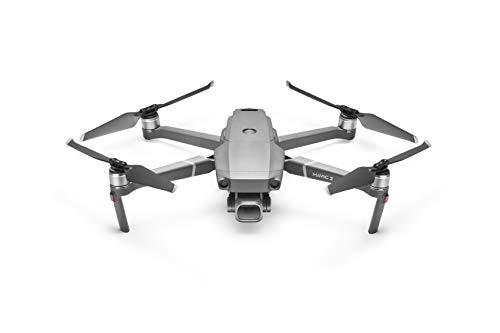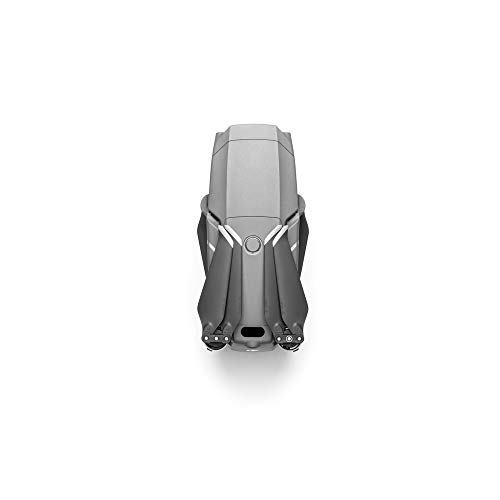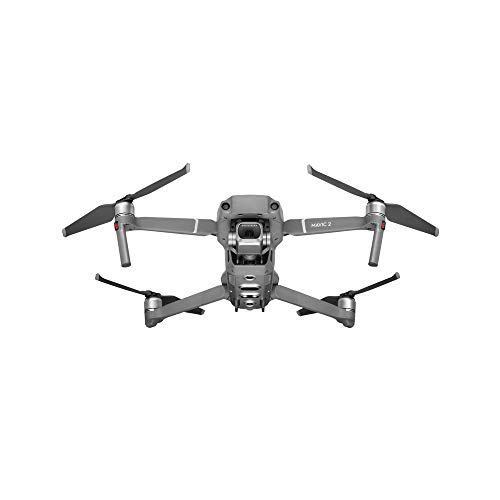Description
Perfect flying camera
An ideal drone is a combination of ingenious engineering, advanced technology and the world’s best optical system for shooting. This is the dream of all manufacturers of flying cameras. And DJI was able to fulfill this dream when it developed and produced the unrivaled Mavic 2 in two versions: Mavic 2 Pro and Mavic 2 Zoom.
Cardinal update
DJI Mavic 2 Pro is a complete update of the famous series of folding drones. This applies to both flight characteristics and the film crew. The copter is equipped with new engines, new propellers and an updated hull design, the flow of which increased by 19 percent. Other technical parameters also improved: for example, the speed at maximum was 72 km / h, the pilot time increased to 31 minutes. At the same time, the noise level from the engines was reduced to a large extent.
More Speed
DJI engineers managed to combine in the new drone such characteristics as: high speed (at a maximum it reaches 72 km / h), a high level of reliability and excellent aerodynamics. One of the decisive factors was the redesign of the Mavic 2 body, due to which the aerodynamics of the new model are 19% better than the previous one – the Mavic Pro.
Flying further
Everyone who has been involved in aerial photography at least once in their life knows well how important the amount of time that an aircraft can spend in the air. The longer the flight, the more opportunities, the more interesting frames. The creators of the Mavic 2 have ensured that even such a seemingly small drone could spend in flight up to 31 minutes of time (subject to a constant speed limit of 25 km / h and calm weather). The duration of the flight will, of course, depend on the specific piloting conditions.
Quieter sound
Previously, the constant rule was: the more powerful the aircraft, the higher its speed, the higher the noise level. However, if we are dealing with Mavic 2, then everything is the other way around. The engines are more powerful, the speed is higher, and the noise level is much lower than you might expect. And all this thanks to the updated sinusoidal drive travel controllers and low-noise propellers.
Hasselblad camera aboard the Mavic 2 Pro
DJI, a world leader in civilian drones and aerial photography technologies, has once again combined its capabilities and competencies with Hasselblad, a world leader in high-quality professional medium format cameras. This technological union has designed and created a new integrated aerial photography system for the DJI Mavic 2 Pro in the form of a full-time Hasselblad L1D-20c camera.
Hasselblad Natural Color Solution (HNCS) Technology
The Hasselblad L1D-20c is not just the most advanced aerial camera. It sets higher quality standards for frames made from the air. The new filming complex could not do without the proprietary technology Hasselblad Natural Color Solution (HNCS), which helps to create frames with maximum color accuracy. DJI and Hasselblad have adapted HNCS technology to the process of taking pictures and filming from the Mavic 2 Pro. HNCS optimizes the resulting image by creating a wider range of colors and providing absolute color accuracy. As a result, the user gets the best natural colors without spending time choosing from several presets. This technology has been seamlessly integrated into the Mavic 2 Pro camera system to improve color rendering and tone rendering for video and still image creation.
1 inch CMOS sensor
There is no need to talk a lot about the importance of matrix size for high-quality photo and video shooting, especially for shooting from the air. The manufacturer significantly improved the parameters of the matrix, increasing its active area by 4 times compared with a similar device on the Mavic Pro onboard camera. Accordingly, thanks to such parameters, the image arrays have become better, even if the shooting had to be done in poor lighting conditions. In the last plan, high quality is ensured by a wider ISO range of 12800. In addition, a higher resolution of 20 megapixels contributed to the improvement of frame quality.
Dlog-M and HDR video
Two important features, among other things, distinguish the Mavic 2 Pro film complex: the presence of a 10-bit Dlog-M color profile and HDR technology. What does this mean for the results of your survey? Using the Dlog-M color profile and wider dynamic range, you can significantly expand the possibilities of color correction, since the camera can record over 1 billion colors (for comparison, in eight-bit color profiles – only 16 million colors). And this is better detail even if the brightness level changes, for example, when you need to edit sunset pictures or something like that. As for the HDR technology, in conditions of the possibility of shooting video in 4K format, it allows you to connect to a TV that has compatibility with HLG 4K. Thus, you can see the recording in full color spectrum on a high-quality screen.
Aperture adjustment
The Mavic 2 Pro is equipped with an f / 2.8-f / 11 aperture, which you can adjust depending on the degree of illumination of the scene to get great quality pictures and clear detail. Depending on the degree of illumination, the user sets the necessary parameters. For example, when the scene lighting is poor, the aperture settings need to be set to f / 2.8. Thus, more light will be obtained, and the photos will become bright and clear. If the lighting of the shooting scene is good, then just set the aperture setting to f / 11. Shutter speed will decrease, and frames will be of very high quality.
Professional shooting
One of the advantages of almost all flying cameras from DJI is the presence of a proprietary three-axis stabilization system, which is an important factor in smooth and stable photo-video shooting from the air. The regular Mavic 2 camera also has similar support, so you can be 100% sure of the highest level of all frames, provided that you yourself did everything right.
Hyperlapse
Another significant advantage of the owner of DJI Mavic 2 will be the opportunity to use the technology of hyperlapse (Hyperlapse), with which significantly reduces the time spent on processing the shooting results. Thanks to the Mavic 2 hyperlapse mode, it can automatically stabilize the frame directly during the shooting process in automatic mode. And this will help the operator to get time lapses at the highest level, in terms of quality, and quickly share them on social networks and video hosting sites. In addition, the function of saving the flight map in the route catalog will help reduce the time and effort to obtain the desired results. This will allow the owner of the Mavic 2 to repeat the process if desired. A memory card or internal storage device automatically saves JPEG and RAW images for quick processing.
HDR technology
Taking pictures from the air is much more complicated than ground-based photography, but in such cases you can use the latest technologies that have already proven themselves on the ground, for example, HDR technology, which is supported by the standard Mavic 2 camera. In HDR mode, several frames are combined, resulting in a clear a picture that has a wide dynamic range without artifacts.
Low light won’t hurt
All experienced photographers know the problems of shooting in low light. Sometimes the circumstances and the desire of the operator prompt attempts to shoot in the evening or early in the morning in conditions of poor visibility. But on the Mavic 2 camera, HyperLight will help, optimizing images that were taken in the dark. The noise level is reduced, the clarity and brightness of the display increase.
H.265 Codec Support
Mavic 2 has a support function for 4K video format (3840 × 2160/30 frames / s) and H.265 codec with maximum bitrate and higher data transfer rate. Thanks to the use of the H.265 / HEVC codec in the video, it is possible to save 50% more data than when using the H.264 / AVC codec. And this guarantees higher detail detail.
OcuSync 2.0 Technology
Mavic 2 introduced the second version of proprietary technology from DJI – OcuSync 2.0. With its help, the operator gets more freedom during filming by increasing the distance of signal transmission, improving video quality and greater resistance to interference. For example, in normal flight conditions and without serious interference, signal transmission is possible at a distance of up to 8 km, and video in 1080p format. When flying in places with serious interference to wireless communications, the drone can automatically select one of two popular frequencies 2.4 and 5.8 GHz (in Russia it is forbidden to use this frequency). In addition, OcuSync 2.0 technology provides fast downloads and low signal latency.
Advanced APAS Technology
DJI has improved the autopilot mode (APAS) that the Mavic 2 is equipped with. Now the pilot can worry less about possible collisions of the drone with obstacles when flying forward or backward. In any of these directions, the copter can always avoid unexpectedly appearing objects that are dangerous for a collision. In addition, APAS technology will help to form a route during which the drone can automatically avoid obstacles.
Upgraded FlightAutonomy
This system was developed and installed on previous DJI drone models. But for the Mavic 2, it was significantly improved so that the device could detect obstacles in several directions. This was made possible thanks to the rational placement of obstacle detection sensors around the entire perimeter of the aircraft body and advanced software. Thus, the manufacturer was able to significantly increase the safety of the pilot and the life of the drone.
Front sensors
Sensors located in the front of the housing allow for a dual viewing system. They accurately determine the distance to the obstacle in the range up to 20 m, and they can recognize the dangerous object itself at a distance of 20 to 40 meters to the obstacle. In addition, the drone will be able not only to accurately determine this distance, but also to stop in flight on time if the speed is not more than 50.4 km / h.
Lower sensors
Also provide dual visibility. They are able to accurately determine the distance to a dangerous object in the range of up to 11 meters, and recognize the presence of this object at a distance of 11 to 22 meters. Infrared sensors, combined into a single complex, have higher measurement accuracy and are able to set the distance to the object in the range of up to 8 meters. It is known what role the lower sensors play in the safety of piloting. Thanks to them, flight stability is ensured at a certain height (in this case, up to 50 meters), as well as normal landing on a surface already familiar to the drone. And so that the drone could land calmly or fly in poor lighting conditions, it has a special backlight.
Left and right sensors
On the right and left side of the body of the aircraft are also sensors that provide a single viewing system. They can recognize obstacles provided that the speed is not more than 28.8 km / h. In addition, these sensors help safe piloting in ActiveTrack and Tripod modes.
Rear sensors
Sensors in the rear of the case, like the front ones, provide a dual viewing system that can accurately determine the distance to an object in the range of up to 16 meters, and they can recognize the presence of this object at a distance of 16 to 32 meters. These sensors help detect the obstacle and give the drone time to stop. The maximum speed should not exceed 43.2 km / h.
Sensors at the top
In the upper part of the body is a complex of infrared sensors that can accurately measure the distance to an obstacle in the range of up to 8 meters.
Advanced technology and intelligence
Mavic 2 is the very embodiment of the effectiveness of advanced technology. Now the art of aerial photography has become much more accessible, and pilots of the most different levels of training can use it. The drone, equipped with a complex of sensors, a powerful camera and intelligent shooting modes, will help to shoot real masterpieces in a variety of flight conditions. Use the appropriate modes for each case: ActiveTrack 2.0, “Quick Shooting” / QuickShots and the “Panorama” mode. With the updated ActiveTrack, you can shoot moving objects that will be tracked by the drone itself. If you want to take a beautiful panorama, use one of four suitable for you sub-modes of “Panorama” spherical, 180 °, horizontal and vertical. You can also use other intelligent modes – POI 2.0, Waypoint 2.0, “Transtrav”, “Asteroid”, “Boomerang” – to realize the most daring creative plans.
Remote controller
The control panel, provided that its battery is fully charged, can work up to 135 minutes. If you take it with you, you will not experience any special difficulties during transportation due to its ergonomic and compact design, as well as removable joysticks. The modern design allows you to use almost any new version of smartphones with the remote control, and controlling the drone and shooting with the remote control will be extremely simple.





